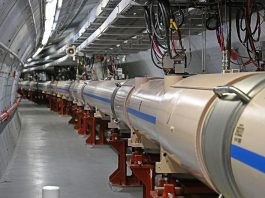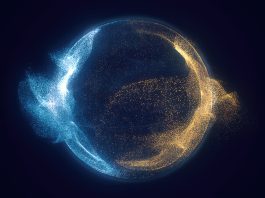The LHCb experiment at CERN has reached a groundbreaking milestone in understanding the imbalance between matter and antimatter.
At the Rencontres de Moriond conference in La Thuile, Italy, LHCb researchers unveiled compelling evidence of charge-parity (CP) violation in baryons – particles that make up atomic nuclei, including protons and neutrons.
This discovery sheds light on fundamental asymmetries in the Universe and may help explain why matter dominates over antimatter.
Since the Big Bang, scientists have been trying to understand why the Universe is composed almost entirely of matter while antimatter remains scarce.
According to the Standard Model of particle physics, equal amounts of matter and antimatter should have been created in the early Universe.
However, the observable cosmos suggests an overwhelming imbalance. The discovery by the LHCb experiment provides new insight into how this asymmetry may have occurred, furthering our understanding of the fundamental laws of nature.
CP violation: A long-awaited confirmation
CP violation, first detected in the 1960s in mesons – particles composed of quark-antiquark pairs – has been extensively studied.
While physicists have long suspected that baryons, composed of three quarks, also exhibit this phenomenon, definitive proof has remained elusive.
Now, thanks to the high-energy collisions produced by the Large Hadron Collider (LHC), the LHCb experiment has amassed enough data to confirm this effect in baryons.
The principle of CP symmetry suggests that the laws of physics should apply equally to particles and their antimatter counterparts when charge (C) and parity (P) are reversed.
However, CP violation indicates a subtle difference in behaviour, suggesting that nature does not treat matter and antimatter identically. This difference, though small, is significant enough to help explain why the Universe evolved to be matter-dominated.
How the LHCb experiment detected CP violation
To observe this asymmetry, researchers analysed vast amounts of collision data from the LHCb detector, spanning two operational runs of the LHC (2009-2013 and 2015-2018).
The focus was on a short-lived particle known as the beauty-lambda baryon (Λb), which consists of an up quark, a down quark, and a beauty quark.
Scientists examined the decay of Λb into a proton, a kaon, and two oppositely charged pions, comparing it to the decay patterns of its antimatter counterpart, anti-Λb.
The results revealed a 2.45% deviation from expected symmetry, with an uncertainty of approximately 0.47%. Statistically, this finding meets the threshold for discovery, exceeding five standard deviations – meaning the likelihood of this result being a mere fluke is extremely low.
Such a high level of statistical certainty is necessary in physics to confirm new phenomena and ensure that the observed effect is real and not due to random fluctuations in data.
Implications for the Standard Model and beyond
While the Standard Model of particle physics predicts CP violation, the observed levels in mesons and baryons are far too small to account for the significant matter-antimatter asymmetry seen in the Universe.
This discrepancy suggests the existence of unknown forces or particles beyond the Standard Model, making the search for additional CP-violating processes a top priority in particle physics.
If new sources of CP violation exist beyond what is currently known, they could provide vital clues about physics beyond the Standard Model. Researchers are particularly interested in whether these effects could be linked to hypothetical particles or interactions that have not yet been discovered.
Such findings could reshape our understanding of fundamental physics and even lead to new theories that explain the missing antimatter in the Universe.
Future directions in the LHCb experiment
The confirmation of CP violation in baryons paves the way for further theoretical and experimental investigations.
With upgrades to the LHC and future collider projects on the horizon, physicists aim to refine their measurements and potentially uncover new physics beyond the Standard Model.
Each discovery brings us closer to unravelling one of the greatest mysteries in the cosmos: why does the Universe favour matter over antimatter?





